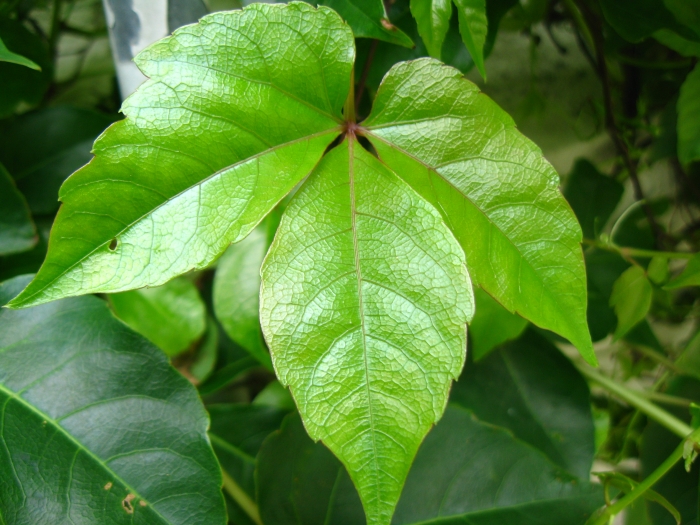Grapevine
(Parthenocissus dalzielii)
Grapevine (Parthenocissus dalzielii)
/
/

13lowect1
CC BY-SA 3.0
Image By:
13lowect1
Recorded By:
Copyright:
CC BY-SA 3.0
Copyright Notice:
Photo by: 13lowect1 | License Type: CC BY-SA 3.0 | License URL: https://creativecommons.org/licenses/by-sa/3.0 | Uploader: 13lowect1 | Publisher: Wikimedia Commons | Title: Op_and_p.dalzeilii_001.jpg | Notes: Uploaded own work with UploadWizard |




Estimated Native Range
Summary
Parthenocissus dalzielii, commonly known as Grapevine, is a deciduous perennial vine native to forested regions and rocky areas in Southern China and Taiwan. It is a member of the Vitaceae family, closely related to the grapevine. This vine is characterized by its broad, trifoliate leaves and its ability to adhere to walls and sloping surfaces, including painted concrete, using adhesive discs that excrete calcium carbonate. The plant produces clusters of small fruits that resemble grapes and turn dark blue to almost black when ripe. Typically, Parthenocissus dalzielii can reach lengths suitable for covering large areas, making it an excellent choice for vertical greening.
The Grapevine is valued for its ornamental foliage and its ability to provide natural insulation. It is used for facade greening, covering walls, and as a decorative element in gardens and urban landscapes. Its deciduous nature allows for passive cooling in summer and solar gain in winter, contributing to energy efficiency in buildings. This vine thrives in full sun to part shade, requiring low to medium water levels and well-drained soils. While it can be grown in pots, it is most effective when allowed to spread on slopes or structures. Propagation is typically done through seeds or cuttings. Gardeners should note that while it is generally low-maintenance, it may require pruning to control growth and prevent it from becoming invasive in some areas.CC BY-SA 4.0
The Grapevine is valued for its ornamental foliage and its ability to provide natural insulation. It is used for facade greening, covering walls, and as a decorative element in gardens and urban landscapes. Its deciduous nature allows for passive cooling in summer and solar gain in winter, contributing to energy efficiency in buildings. This vine thrives in full sun to part shade, requiring low to medium water levels and well-drained soils. While it can be grown in pots, it is most effective when allowed to spread on slopes or structures. Propagation is typically done through seeds or cuttings. Gardeners should note that while it is generally low-maintenance, it may require pruning to control growth and prevent it from becoming invasive in some areas.CC BY-SA 4.0
Plant Description
- Plant Type: Vine
- Height: 20-40 feet
- Width: 10-25 feet
- Growth Rate: Moderate
- Flower Color: N/A
- Flowering Season: Summer
- Leaf Retention: Deciduous
Growth Requirements
- Sun: Full Sun, Part Shade
- Water: Low, Medium
- Drainage: Medium
Common Uses
Bee Garden, Bird Garden, Butterfly Garden, Low Maintenance
Natural Habitat
Forested regions and rocky areas in Southern China and Taiwan
Other Names
Common Names: Yi Ye Di Jin
Scientific Names: , Parthenocissus dalzielii, Parthenocissus landuk,
GBIF Accepted Name: Parthenocissus dalzielii Gagnep.